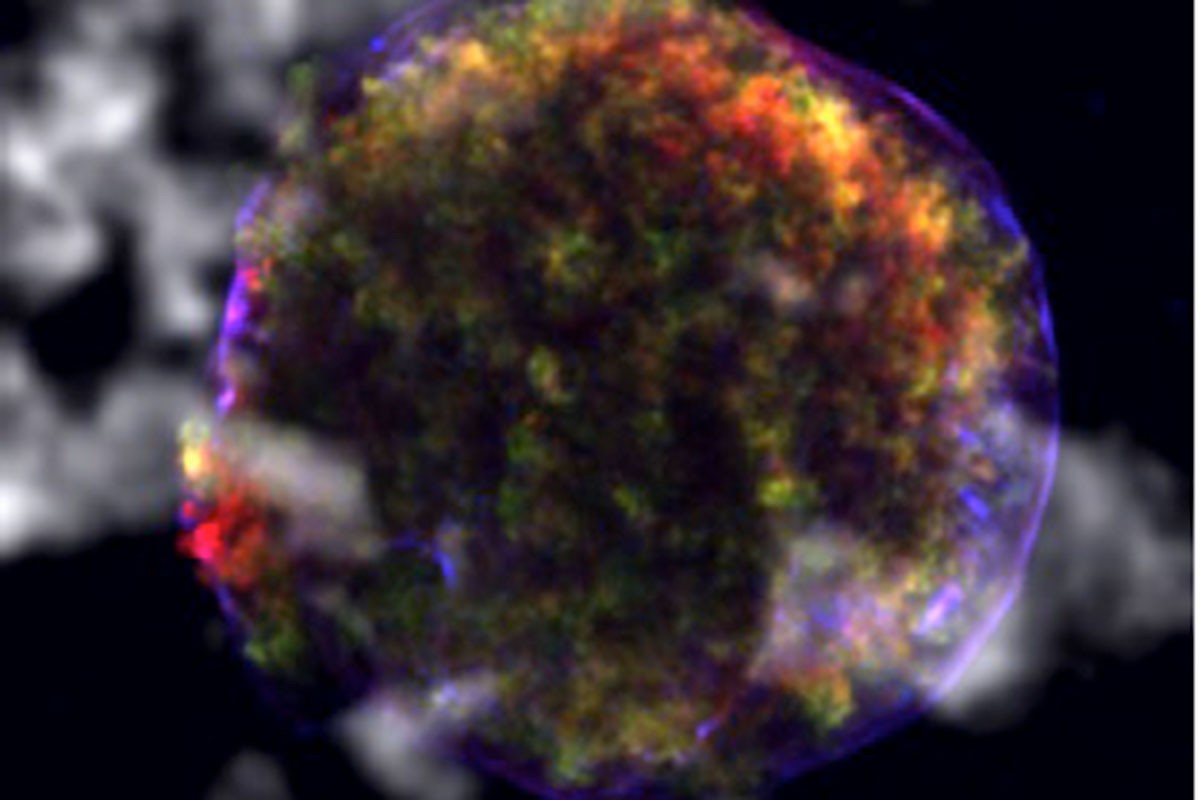
Figure 1 - Tycho’s supernova remnant in a molecular cloud bubble. Grey: molecular gas traced by carbon monoxide emission observed with IRAM 30m telescope (credit: P. Zhou); color: X-ray emission observed with the Chandra X-ray Observatory (credit: NASA/CXC/Rutgers/J.Warren & J.Hughes et al.)
Expanding molecular bubble unveils the mysterious origin of Tycho’s supernova
A team of international scientists has determined the origin of a famous cosmic “mileage marker.”
Astronomers know how big the universe is because a specific type of supernovae, called Type Ia supernovae, are used as a standard unit of measurement. The distance to a nearby galaxy can be determined by looking for a Type Ia supernova in it, calculating how bright it appears and comparing it with Type I supernovae elsewhere.
The best studied of these is Tycho’s supernova, named after Danish astronomer Tycho Brahe who studied this particular phenomenon in great detail. Tycho’s supernova is the debris of a star that exploded in AD 1572 and was so bright it was visible during the day.
But until now, no one knew how such a supernova actually formed. Despite several dedicated studies of Tycho’s supernova remnant, astronomers still didn’t know what caused the explosion.
Astronomers posited two competing theories on Type Ia formation, and an international team of astronomers from China, UK and Canada has finally found evidence supporting one theory known as the “single degenerate.”
A single-degenerate scenario occurs when a white dwarf star accretes matter from a nearby star, grows too massive to support itself, collapses and explodes. The competing idea, a “double degenerate,” involves two white dwarf stars merging into one big body before catastrophically collapsing.
“If Tycho’s supernova resulted from a single-degenerate system, we could have an opportunity to find a bubble blown out by the strong wind from the white dwarf while it accreted materials from the companion star,” says Ping Zhou from School of Astronomy and Space Science at Nanjing University, China, who led the research team. And indeed, the team found just that using the IRAM 30 m radio telescope in Spain.
“This discovery is evidence for a single-degenerate progenitor for this Type Ia supernova,” says Yang Chen of Nanjing University, China, co-author of the discovery paper. “The expanding molecular bubble provides key boundary conditions on the supernova progenitor system. To create such a molecular bubble shell, the system must have exploded at a speed of hundreds of kilometers per second. Today, we are watching the supernova blast wave quickly overtaking the molecular bubble shell from the bubble interior.”
Astronomers usually find Type Ia supernovae in a low density interstellar medium, and therefore the interaction of Tycho’s remnant with molecular clouds is unexpected. In fact, Tycho may be the only Type Ia supernova remnant so far known to be associated with a molecular cloud.
“There might be more wind-blown bubbles waiting to be discovered among the known Type Ia supernova remnants in our Milky Way galaxy. Finding them―or not―will help address additional questions about the origin of Type Ia supernovae,” says Samar Safi-Harb, of the University of Manitoba, Canada, a co-author of the paper.
Figure 2 – A 3-dimensional (sky positions and Doppler velocity) visualization of the expanding molecular bubble surrounding Tycho’s SNR (credit: P. Zhou).

This work has been recently published in Astrophysical Journal on July 20, 2016 and the molecular observations were carried out with the IRAM 30m radio telescope at Pico Veleta in Spain.
The published article can be viewed here: http://iopscience.iop.org/article/10.3847/0004-637X/826/1/34
or






